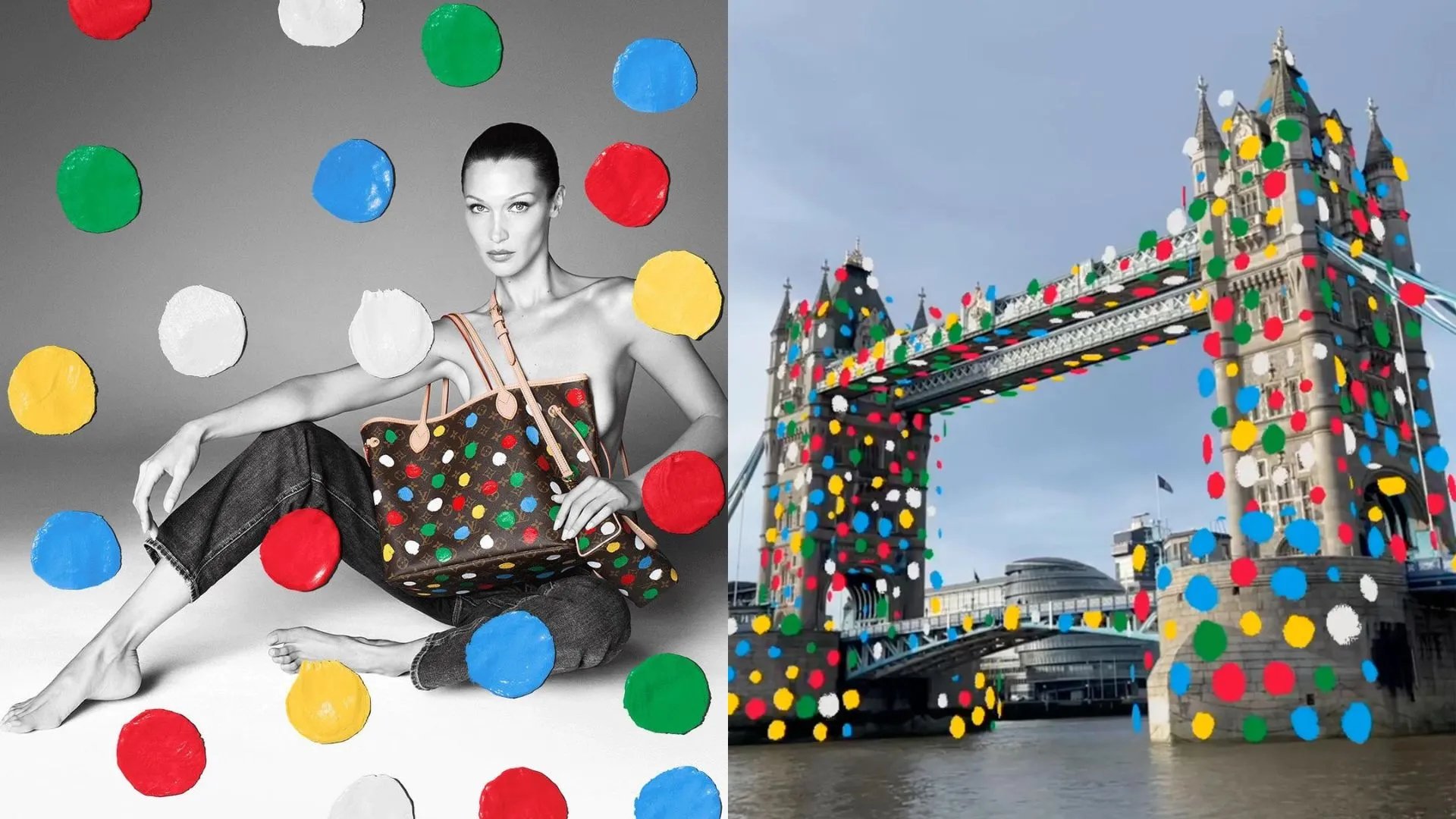Yayoi Kusama’s AR Polka Dots
Yayoi Kusama’s collaboration with Louis Vuitton brings her signature polka dots over historical landmarks around the world using augmented reality – visitors not only immerse themselves in Kusama’s colorful world, but also take part in the digital revolution.
How Yayoi Kusama’s Augmented Reality Polka Dots Transform The Art World | Digital Art Explained
In January 2023 a brilliant collaboration between the renown artist and the French luxury house covered iconic landmarks with Kusama’s signature polka dots using augmented reality. The project has been a significant step forward for the digital art world by providing legitimacy, bridging traditional and digital practices, and granting mainstream recognition.
Yayoi Kusama is a Japanese artist who is recognized as one of the greatest artists of our time. She is best known for her obsessive use of polka dots in her paintings. Her hallucinations as a kid often involved fields of dots, which then became her trademark as an artist – she explains painting polka dots as a way of coping with her mental disorder by disappearing into her artwork.
Kusama is also known for her “infinity” works, in which she explores the physical and psychological boundaries of art. The seemingly endless repetition of these marks feel as if they continue into infinity, and create a hypnotic sensation.
Bringing her polka dots and infinity series into our digital age, augmented reality becomes the perfect medium for the artist. Augmented Reality (AR) refers to computer-generated images, videos, or effects being superimposed over a user's real-world view.
Using AR, Kusama explores further blurring of the edges of her canvas, as well as the boundaries between physical and digital worlds.
Acclaim, Recognition, and Economy
When acclaimed traditional artists like Yayoi Kusama venture into the digital art world, it lends legitimacy to digital art as a valid and respected form of artistic expression. Her participation signals that digital art is not a niche or peripheral medium but an integral part of the contemporary art landscape. The art community is encouraged to embrace the diversity and evolution of arts.
In line with this, Yayoi Kusama and Louis Vuitton’s collaboration has attracted significant mainstream media attention and coverage. This helps raise awareness about digital art among audiences who might not typically engage with it.
Along with mainstream media recognition, the project brings Kusama’s substantial fan base and followers into the world of digital experiences. This visibility helps shift perceptions and elevates digital art to a more prominent position within the cultural conversation. It leads to a deeper appreciation of digital arts.
All these in return influence the art market significantly – when renowned traditional artists participate in digital practices, we experience an increased interest and demand for digital artworks. By attracting collectors and investors to the digital art market, their involvement reinforces the economic viability and sustainability of digital art as a valuable investment.
AR makes fine art accessible to public
In line with greater access and participation, the project democratizes the acclaimed Japanese artist’s work by bringing her art from expensive museums to public spaces. It also challenges the norms of where and how art should be displayed.
Traditional art galleries and museums are not always accessible to everyone due to location, cost, or physical limitations. Superimposing augmented reality art on public landmarks allows people to experience art in public spaces. The use of augmented reality requires nothing more than a smartphone.
This way, Kusama’s art reaches a more diverse and widespread audience. Anyone passing by these historical landmarks can experience and interact with her art.
Similarly, the project opens up Louis Vuitton to a Gen Z consumer base, with 75% of Snapchat users being younger than 30 years old. This approach aligns with the evolving nature of art appreciation in the digital age, where technology allows for greater access and participation.
Symbolically, placing augmented reality art on historical landmarks creates a dialogue between our traditional past and digital future.
One Big Phygital World
“We wanted to make something on a huge scale that also has a huge meaning: painting the world’s biggest landmarks and monuments is also a statement, the same way that Louis Vuitton painted their boutiques and stores. It’s a way for the Louis Vuitton and Kusama teams to show the bridge between online and offline; they’re digitally painting their dots on top of the real world.”
The Global Head of Luxury at Snap Inc., Geoffrey Perez, explains how the project is a huge statement with a huge meaning to show the bridge between online and offline worlds. The project also served as a statement to how we absolutely love it when virtual experiences come to our physical world. The bridging of traditional and digital is interesting, engaging, and exciting.
In addition to AR polka dots, the collaboration also involves a life-sized Kusama replica at Louis Vuitton’s Fifth Avenue store in New York. The robot, which paints polka dots onto its store window, has gained great public interest and has been widely shared across social media.
As acclaimed traditional artists like Yayoi Kusama embrace digital tools and technologies, they contribute to the evolution and acceptance of digital art as a vital and respected form of contemporary artistic expression, paving way to emerging artists around the world.Description
Yayoi Kusama’s collaboration with Louis Vuitton brings her signature polka dots over historical landmarks around the world using augmented reality – using the Snapchat app, users not only immerse themselves in Kusama’s colorful world, but also take part in the digital revolution.






